My shopping cart
Your cart is currently empty.
Continue Shopping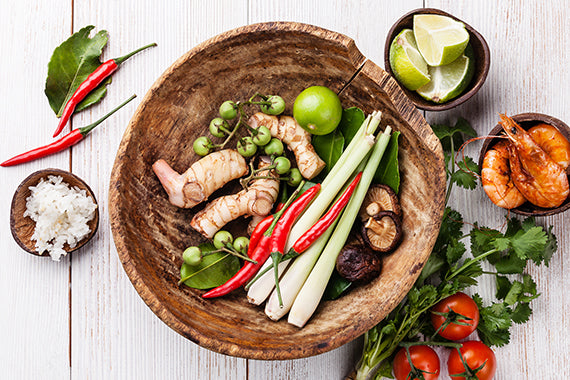
To achieve the best tasting Thai food, fresh and proper ingredients are essential. However, it is not always easy to find authentic ingredients like fresh tamarind, kaffir lime leaves, galangal, or real Thai basil, especially when you live outside Thailand.
So, one of the most asked questions about cooking Thai food overseas is what ingredients to substitute in when the right ones aren’t readily available.
Here is our suggestion for alternative ingredients that can be adapted to help you create your favorite Thai dishes.

One of the most important ingredients in Thai cuisine, the leaves are widely used in Thai recipes for curries, salads and soups.
It is hard to find a substitute for kaffir lime leaves, but frozen, dried or paste of kaffir lime leaves are fine (depending on the recipe). If it is not possible, you can substitute with the leaves of regular limes or lime skin/zest, but not lemon as the taste will be very different.

Galangal rhizomes are used in various traditional Thai cuisine from curries, soups to salads, to add scent and flavor to dishes. Galangal looks similar to ginger, but it tastes completely different, so we don’t recommend substituting galangal with ginger.
If you can get fresh galangal from the local market or store, you can freeze it in a plastic bag for a long time. But if you cannot, you can try to find alternative forms like galangal paste, dried or powdered galangal instead.
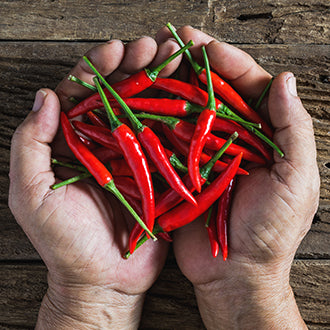
This small chili is used extensively in Thai cooking. However, its taste is extremely hot and spicy, so if you cannot tolerate spicy food, you can choose to skip it in some recipes.
To substitute bird’s eye chilies, you can use Habanero, local spicy chilies, or dried chilies.
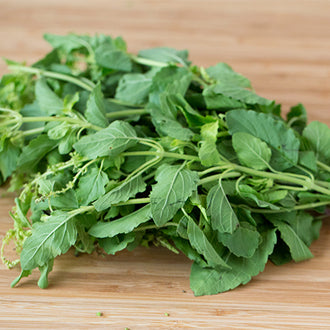
Holy basil or Thai basil is a staple base of the Thai stir-fry dish ‘Pad Gra Prow’ (minced meat fried with basil). You can use Italian or Greek basil leaves to substitute Thai basil.
Be careful if you want to use sweet basil, the leaves are typically used in Thai curries and its aroma will be different from holy basil.
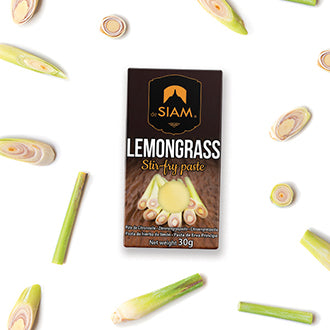
Lemongrass is another herb commonly used in many Thai dishes such as curries, spicy soups, and salads.
You can use strips of lemon zest as a substitute or find alternative forms like lemongrass dressing or stir-fry paste for easier cooking and more authentic taste.
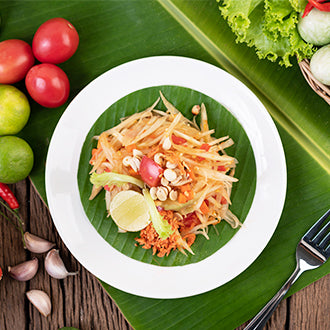
Mostly eaten while green and unripe, and used as a main ingredient in Som Tam or Green Papaya Salad.
For alternative ingredients that give similar texture and taste, you can use Kohlrabi (German turnip) or rutabaga.
You can also adjust the recipe and use other vegetables and fruits such as cucumber, green apple, or chopped long beans.
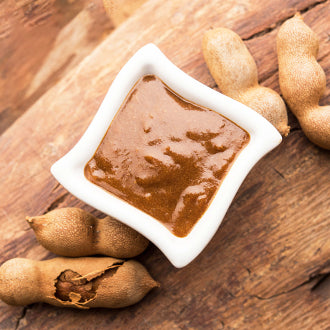
The fruit is mainly used in Thai dishes like Pad Thai or Prawn with Tamarind and some Thai sweets to give a pleasant sour taste.
It is usually used in paste or liquid form.
If you cannot find tamarind paste or juice anywhere, you can replace it with apple vinegar, rice vinegar or pineapple vinegar.
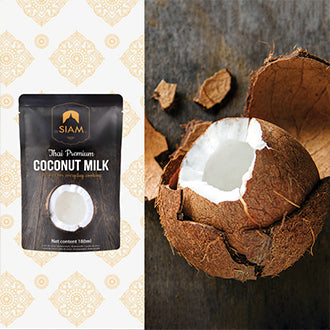
Widely used in Thai curries and desserts.
Coconuts are not difficult to find, but preparing coconut milk to cook Thai food can be tricky.
So alternative options are canned coconut milk or powdered coconut milk. Whilst it won’t be as delicious, you can substitute in thick cream or whole milk.
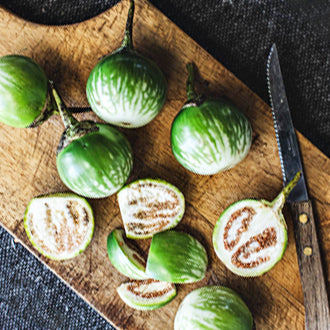
These round, ping pong sized eggplants are commonly used in curries or stir-fries, but are also eaten raw in Thai salads or with Thai chili dips.
For curries and stir-fries, you can substitute with long aubergine or purple eggplant.
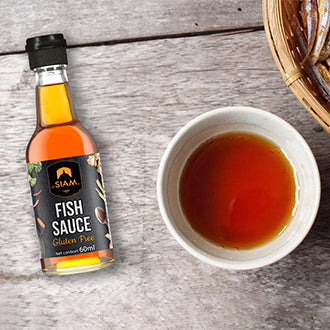
Fish sauce is the most popular condiment used in Thai food. The sauce is made from fish and salt and fermented for up to two years. It has a pungent aroma but giving savory umami flavor to the dishes.
For alternative or vegetarian recipes, you can use soy sauce or salt to replace fish sauce, though it does produce a very different flavor.

The shrimp paste is made by fermenting ground shrimp and salt. Its pungent fishy aroma and salty umami flavor combines to make it a popular choice in Thai recipes, as it is denser, and tastier than fish sauce as well as smelling different. If you want to make a Thai curry, you can skip the shrimp paste, or use 1 tablespoon of fish sauce for every ½ tablespoon of shrimp paste. In some recipes, you can use mashed salted soy beans (or dark Japanese Miso paste), anchovy paste or mashed up anchovies.

Coconut sugar and palm sugar are commonly used in Thai cuisine and desserts.
The easiest way to substitute coconut or palm sugar is using brown sugar or muscovado sugar, or as a very last resort, white sugar.

Shallots are generally used in Thai cooking almost as much as garlic. In Thailand, Thai Shallots are normally prepared roasted, fresh, fried or minced and mixed into chili pastes, curry pastes, and add flavor to chili fish sauce and dipping. You can use red or Spanish onions to replace Thai shallots.
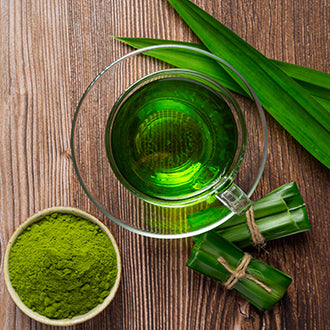
The leaves are regularly used for their flavor and fragrant scent in many Thai main dishes, desserts, and drinks.
Their unique taste and aroma make finding a good substitute for pandanus leaves difficult. If you can’t find them in your local markets or stores, it would be better to leave them out or try a different recipe.
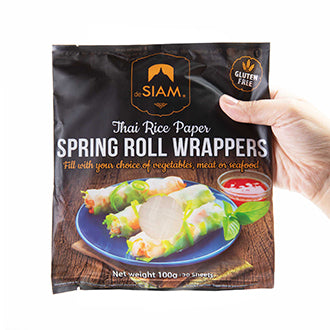
You can substitute rice papers with egg roll wrappers or wanton wrappers which are thicker and different in texture, but still good for making fried or baked spring rolls.
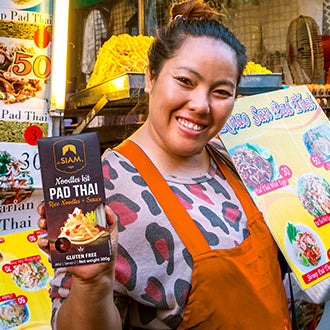
Pad Thai is now popular worldwide, so it is easy to find the noodles in local stores or markets near you. But if you don’t have Pad Thai noodles, or want some alternative ingredients, you can try shirataki noodles (made of a Japanese yam), vermicelli, fettuccine or linguine.
Since Thai food is getting more popular around the world, now you can find most of these products and ingredients in the local Asian markets or supermarkets near you or if you still can’t find what you want, you can order them online on www.desiam.com !